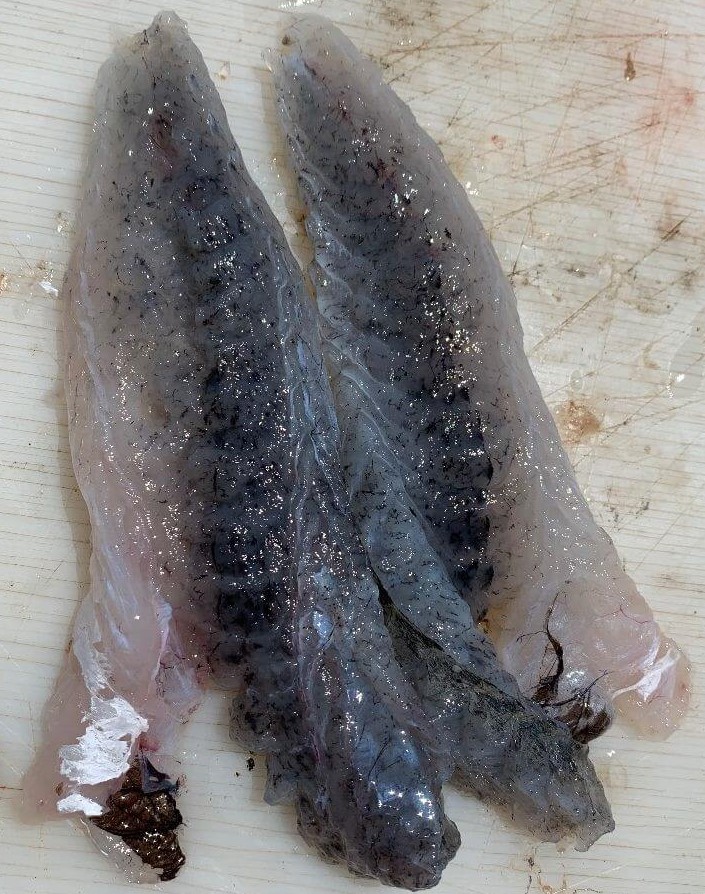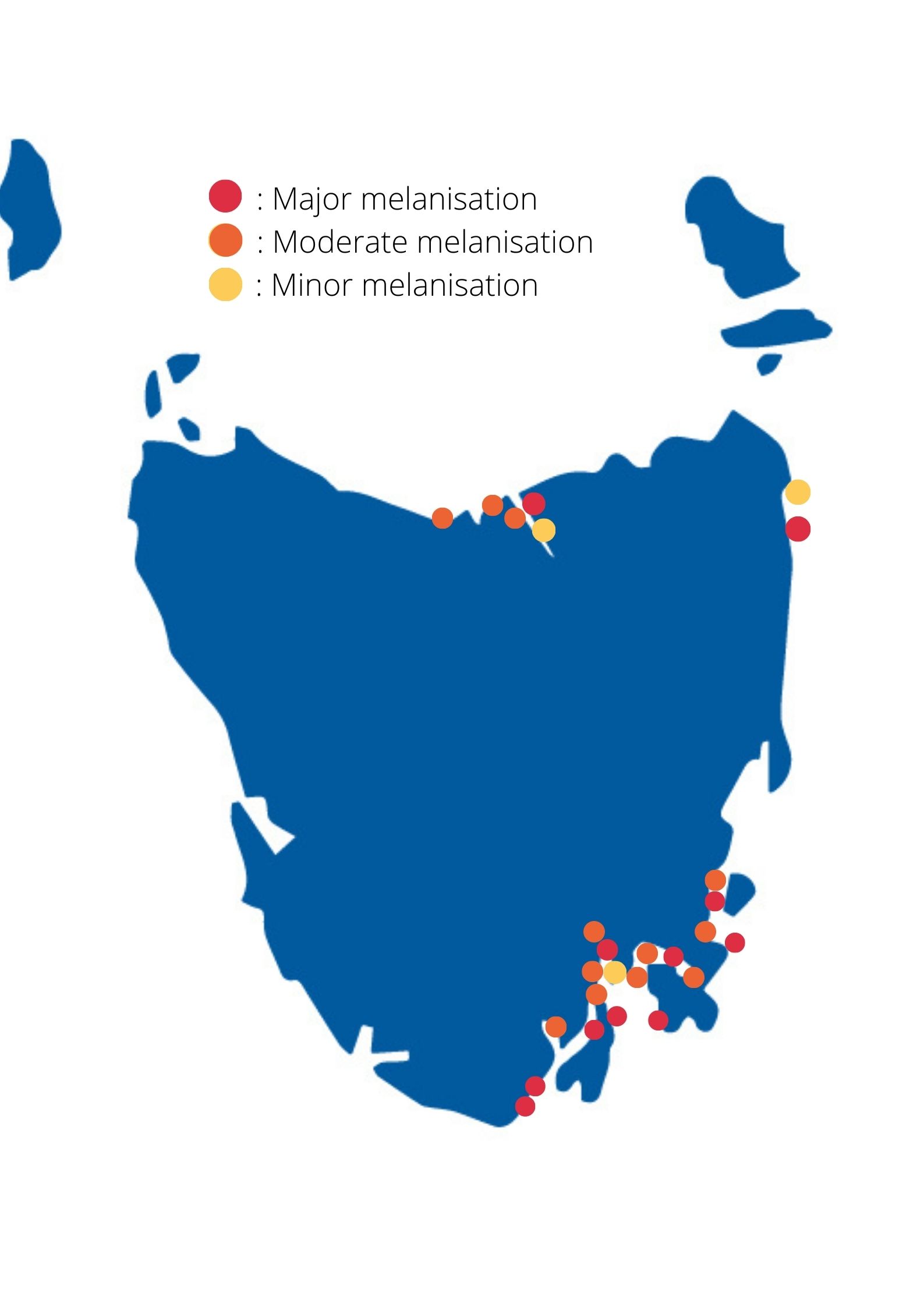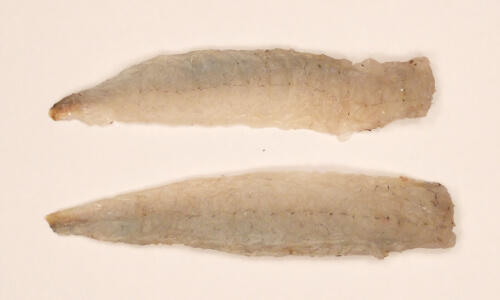The Black Fillet Project is an IMAS program that aims to address melanisation (blackening) of Sand Flathead fillets.
Recreational fishers in Tasmania have been increasingly reporting melanisation in their Sand Flathead fillets.![]()
Whilst initially these reports were mainly from the Derwent and Tamar estuaries, they now extend to more pristine areas. This suggests that factors other than pollution may be involved.
We do not know if other fish species are also affected, what the geographical extent of the melanisation is, what causes this condition and what factors increase the risks.
Where muscle melanisation has been reported in wild fish in the Northern Hemisphere it has been caused either by parasites or presence of copper.
In contrast, preliminary results suggest that neither parasites nor copper are involved in melanisation of Tasmanian flathead muscle.
A Tasmania survey on melanisation, which attracted almost 450 respondents, found that the vast majority of fishers surveyed had observed melanisation in at least some of the Sand Flathead they had caught.
The survey showed that while the occurrence of melanised flathead was widespread around the Tasmanian coast, the phenomenon was most common in flathead from Tamar River in the north, as well as the Derwent Estuary, D’Entrecasteaux Channel, Norfolk-Frederick Henry Bays and the Tasman Peninsula in the south.
Recently there have been concerns regarding the health of fish in the Tamar estuary, particularly in relation to the consumption of seafood. Over the past few years, “blackening of muscle” has appeared in Sand Flathead, the most-fished recreational species in northern Tasmania.
You can share your sightings on melanisation through our online form.

A preliminary investigation was undertaken using samples from flathead caught by recreational fishers in March 2010, with more sampled in September 2011. The flathead appeared to have melanin deposits in the skeletal muscles (around individual muscle fibres) and some pigment was associated with blood vessels.
In 2015/16, two Honours projects at the University of Tasmania, one at the School of Natural Sciences (Chemistry) and one at IMAS, investigated the possible causes of melanisation.
Zinc levels were higher in the muscle of melanised fish and zinc has well known association with melanin in other animals. No parasites were present in the muscle of the affected fish. Read about the projects here.
But now, as part of an extension of these two projects, researchers are more confident that melanisation in Sand Flathead occurs in areas polluted by zinc.
The melanisation project, published in 2022, used new techniques to analyse zinc levels in melanised Sand Flathead muscle and in crabs (the flathead’s main diet). They found that melanised fillets had higher zinc levels than non-melanised fillets, likely caused by crabs with elevated zinc levels. The flathead and crabs caught in waterways polluted by heavy metals had higher zinc levels than non-polluted waterways.
In 2018/19, in another IMAS Honours project recreational fishers were surveyed to assess the extent of muscle melanisation in marine fish in Tasmania.
The vast majority of respondents indicated that they had observed melanisation in at least some of the Sand Flathead they had caught. The findings of this survey can be found here.
That Honours project included studies of other aspects of melanisation, confirming that the melanisation of flathead muscle was most severe in Deceitful Cove, Tamar Estuary. It was suggested that both eumelanin and pheomelanin were involved in this phenomenon.
Melanisation was not, however, related to fish condition, age, sex, maturation stage, fish weight, fish length or size of melano-macrophage centres in the liver or spleen. A journal article about this project is available here.
Muscle melanisation in Sand Flathead is currently the subject of an ongoing PhD research in the School of Natural Sciences (Chemistry) and IMAS, University of Tasmania.
A muscle melanisation scoring system for the Sand Flathead has been developed to standardise future research efforts and enable comparisons between different Sand Flathead studies. A journal article about the scoring system is available here.
 Why is this work important?
Why is this work important?This research is vital as Sand Flathead is one of the most important finfish species in Tasmania, with significant recreational value.
The species represents almost two thirds of the total recreational finfish catch numbers, with approximately 2 million fish caught annually in Tasmania.
Despite the importance and abundance of these fish species in Tasmanian waters, there's little information regarding the health status of this species.
Because flathead are abundant and exhibit strong site fidelity, the species has been used as ‘sentinel’ species to monitor pollution in estuaries, for example in the Derwent and Tamar Estuaries in Tasmania and Port Philip Bay in Victoria.
The high levels of mercury in flathead from some Tasmanian estuaries has been recognised for many years. Read more about mercury levels in the Derwent Estuary here.
Use our online form to tell us about your black fillet sightings.
Since mid-2019, we have received many reports of melanisation from fishers, primarily in Sand Flathead. Aside from Sand Flathead, reports of melanisation in other fish species have also been reported for the first time. We have also started receiving reports from other Australian states outside of Tasmania.
The locations where melanisation been observed by researchers and recreational fishers include:
There have also been reports of melanisation in other fish species, not just in Tasmania but in the United States:
 No melanisation (score: 0) No melanisation (score: 0) |
Minor melanisation (score: 1) | ||
|---|---|---|---|
|
| ||